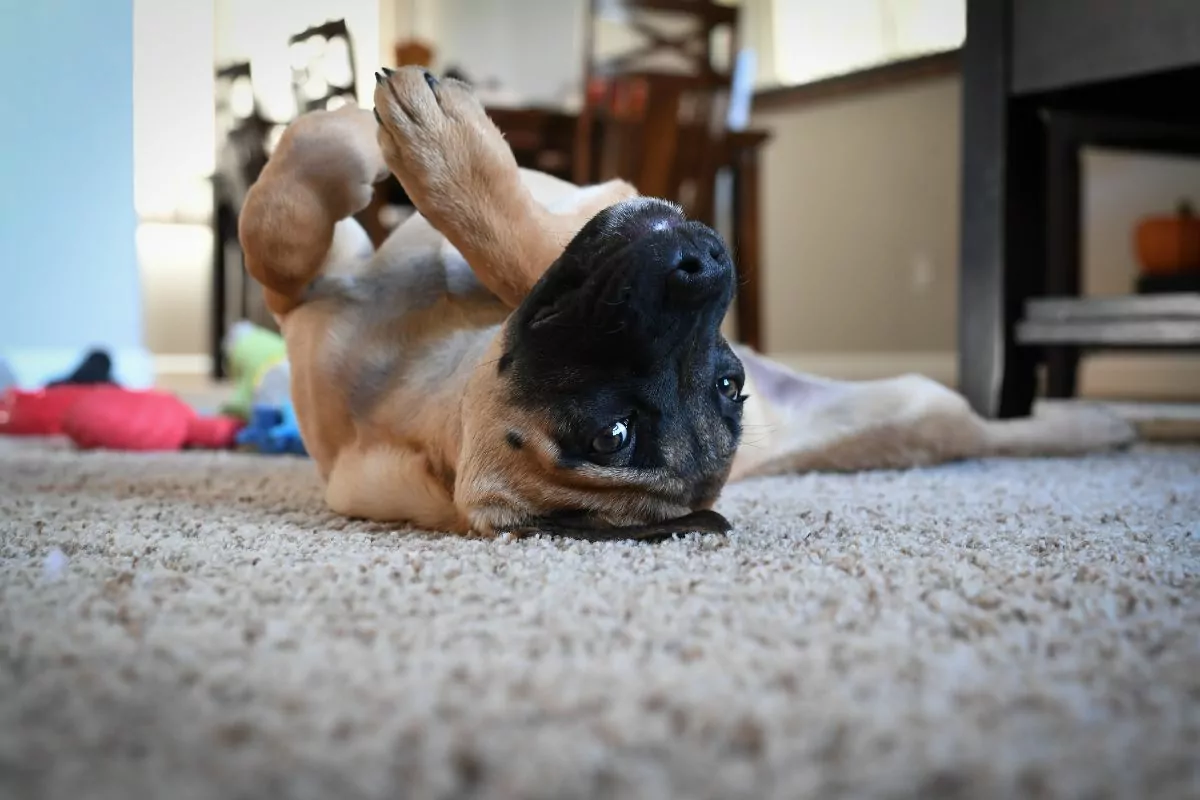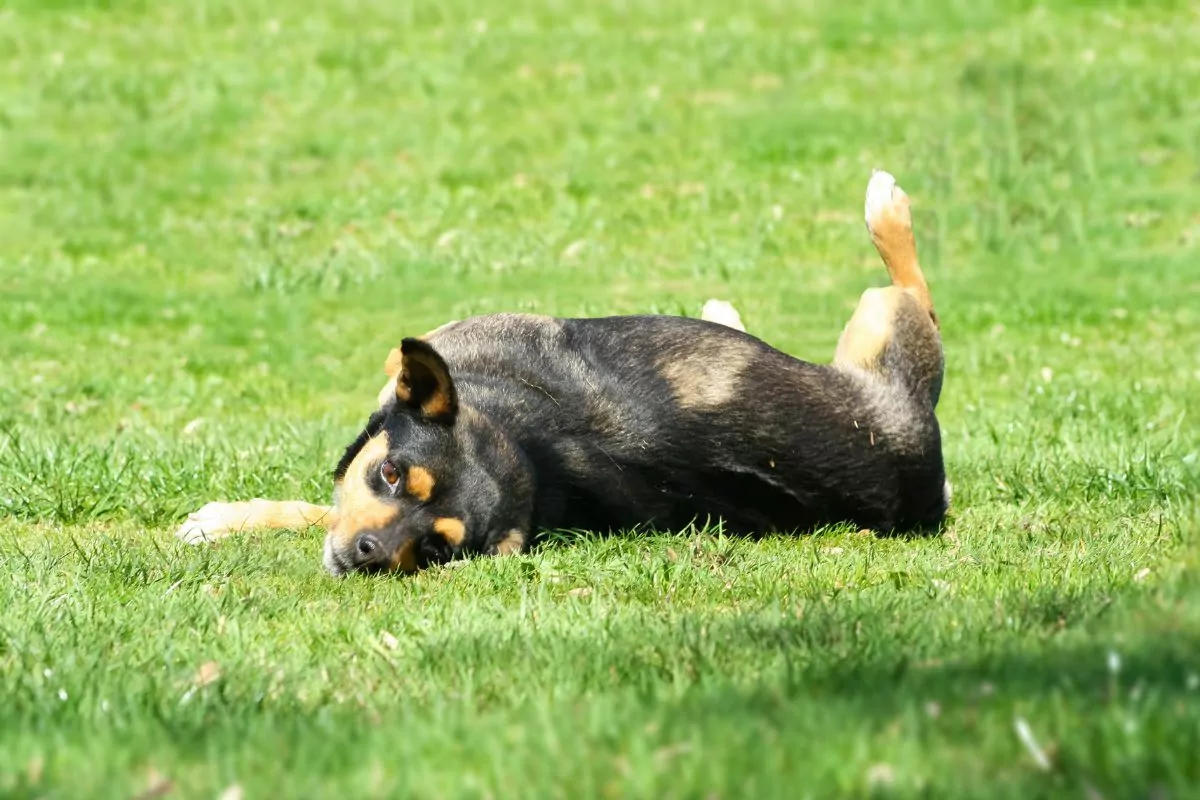How Long Does a Dog Take to Roll Over?
Do you know how to teach a dog to roll over? If you don’t, we are here to guide you on how to do it.
Before we start, you should know that teaching roll over may take a few weeks because sometimes you must repeat earlier steps. So, you must remain patient and avoid training sessions exceeding 15 minutes.
That said, let’s explore more about it.

How to Teach a Dog to Roll Over
To understand how to make a dog roll over easily, it is best to know the reasons for teaching your dog the trick. To begin with, teaching rolling over is an effective way of stimulating your dog mentally and increasing the bond you two share. It doesn’t matter if your pup is a youngster or an older dog.
Also, teaching a dog to roll over can help during a veterinary examination when needing to access and manipulate its stomach area.
Notably, it’s advisable to use a reward-based approach to teach a dog to roll over on command quickly. It involves offering a treat or a favorite toy when your pup does something you want it to do. Also, it shows your pup that obeying your command is something it should be striving for, as it attracts something it enjoys.
Simple Dog Roll-Over Training Steps
To quickly teach a dog to roll over on command, it would be best to use the following five steps:
- Begin by teaching it the ‘down’ or ‘lie down’ position. Every time it successfully lies down, praise and reward it. Do this consistently throughout several short training sessions until it understands and executes the command with little to no reward.
- Place a treat near its nose once it lies down and slowly move it to the side of its head and then toward its shoulder. This move encourages it to lie on its side. Afterward, reward it with a praising word and treat it each time it assumes this position. Repeat this exercise several times until your dog becomes comfortable with it.
- Once your dog is lying flat on its side, move the reward along its shoulder towards the backbone. Hopefully, it will roll onto its back. If it does, continue moving the treat to make the dog roll onto the other side. Also, reward and praise it immediately. After it has successfully rolled over, use the command “roll over.”
- Gradually reduce the hand motion and reinforce the trick with the verbal cue until the dog can perform it without a hand signal.
- Don’t be discouraged if it takes time. Remember, teaching a dog to roll over is not easy. So, break it down into small steps so your pup can naturally accept this position it considers exposed. Also, pace your progress over several days. Soon, you’ll be rolling together.
Dealing With a Stubborn Dog
Is your dog refusing to follow your commands during a roll-over training session? If so, some of the strategies you can use are as follows:
- Take it slow: Begin training your dog by working only on behaviors it knows and is comfortable with. Also, give it lots of rewards—even for small successes. Once your furry friend understands that training can be fun, progress slowly. Also, switch up only one part of the exercise at a time. If either of you gets overwhelmed, take a break and try again.
- Control the environment: When training your dog, take measures to ensure it can stay focused. So, find a quiet area with few distractions. Also, remove toys or anything else that tempt it to play or chew. If you are training your dog outdoors, provide extra safety by using a leash, long line, or fenced-in area to contain it.
- Be consistent: To make your dog obey your commands, use consistent cues and rewards. Failing to do this can confuse the dog, which may seem unruly when simply perplexed.
- Avoid punishment: Punishment can create anxiety in your dog, destroying the trust you have built. In the long term, it may even cause aggression. Instead, use reward-based training tactics for your dog to respond to commands correctly. For unwanted behaviors, redirect your pup and offer it a reward for the new behavior.
- Use appropriate rewards: Make desired behaviors highly rewarding for your dog by offering what it values most. The rewards include toys, treats, and petting. Doing so frequently stimulates their response and encourages the desired behaviors.
- Get help: If rewards-based training does not seem to have an effect or your dog exhibits aggression or fear, it’s advisable to consult a specialist. So, contact your veterinarian to find a professional trainer or veterinary behaviorist near you.

At What Age Can I Teach My Dog to Roll Over?
Are you wondering why your puppy can’t roll over? One of the reasons is that it might be too young for the trick.
Notably, a dog can learn the commands “sit” and “lie down” when it’s eight to ten weeks. However, if you want it to learn to “roll over,” it is best to wait until it is approximately 10 to 12 weeks old.
Which Other Tricks Are Easy to Teach a Dog?
Besides “roll over,” the following are other cool easy tricks to teach dogs:
- Sit: After your pet has mastered “sit,” it will have a better foundation to learn other commands.
- Stay: Having your dog learn the “stay” command helps keep it near you so it doesn’t go up to other people or animals.
- Come: The “come” or “here” command can help keep your dog safe from any potential danger, such as a dangerous animal or confrontational dog. Also, it makes your dog come back to you during off-leash moments.
- Leave it: The phrase “leave it” teaches your dog to ignore objects they do not typically interact with. It prevents them from getting hurt or into trouble.
- Down: The “down” command is necessary to keep your dog calm, especially during veterinarian visits or when visitors come to your home.
- Place: The “place” dog trick can get your dog out of the way and deter problem behaviors, including jumping on guests and begging at the dinner table.
- Back up: Training your dog to do the “back up” trick can help give way to people in tight, crowded spaces.
- Shake paws: Teaching your pup to shake paws is a great and easy trick that enables your dog to interact with friends and family.
- Speak: The “speak” trick trains your dog when it’s appropriate to bark to reduce excessive barking.

In Conclusion…
If you were wondering how to train a dog to roll over, we believe you have found our guide helpful. Now, it is time to let the fun begin and teach your canine friend how to do it.
